A team of Spanish specialists from Navarre start a trial against Alzheimer´s
Tuesday, November 29, 2016
Today, I would like to show you a hopeful news: “The University Clinic of Navarra starts a new clinical trial to "cleanse" brain of Alzheimer”.
Indeed, a team of specialists, from the University Clinic of Navarre, has started a new clinical trial, to curb the cognitive deterioration, that causes Alzheimer's disease. This is a multi-centre research, in recruitment phase, involving centres in the United States and Europe. Currently, about 600,000 people suffer from this disease, in Spain.
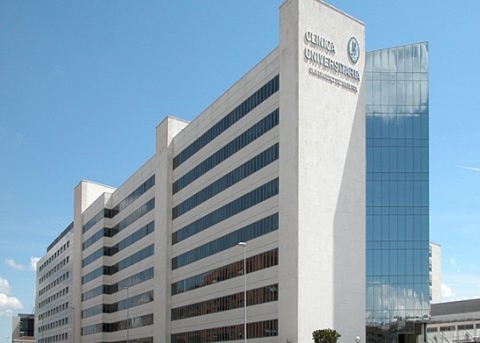
The Universitary Clinic of Navarre
The current treatment is aimed at people with a slight cognitive deterioration, ie in the most incipient stages, in which the disease still does not affect the patients' daily lives. However, this new drug (Crenezumab) also includes people with mild-stage dementia, that is, those stages, in which the patient begins to have trouble, to perform its daily activities.
As eplains the Dr. Mario Riverol, a neurologist, at the Universitary Clinic of Navarra, specializing in Alzheimer's disease and principal investigator in this trial: "These are antibodies, that act on the Amyloid protein, which is deposited in the brains of patients with Alzheimer's, the main cause of the illness. The drug's function is to "clean" the brain's Amyloid, with the goal of stopping the course of the disease".
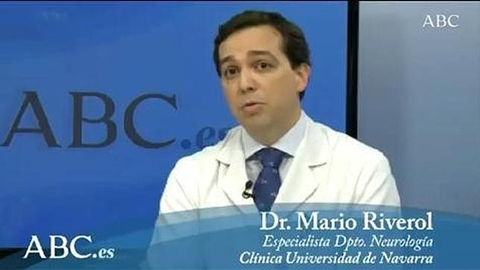
Dr. Mario Riverol

The Amyloid protein
Alzheimer's, which does not currently have a cure, --although there is treatment to reduce some symptoms--, it implies loss of memory, confusion and personality change. Worldwide, more than 47 million people suffer from dementia, of which Alzheimer's disease is the most common form.

From here, I would like to make my own tribute to all those persons, who suffer Alzheimer´s, all over the world.
I hope that the research, that I have talked to you about, can help many people.
Until my next post, kind regards,
Luis.
Sponsored by Costaluz Lawyers.
Please click below:

 0
Like
Published at 11:10 AM Comments (0)
0
Like
Published at 11:10 AM Comments (0)
A very popular fish in Spain
Thursday, November 24, 2016
Today I would like to talk to you about Cod.
Common cod, Atlantic cod or cod from Norway (Gadus morhua) is one of about 60 species of the same family of migratory fish. It lives in cold northern seas. Usually, cod is small in size, although some specimens can reach one hundred kilograms in weight, with a size of up to almost two metres. It feeds on other smaller fish, such as herring.
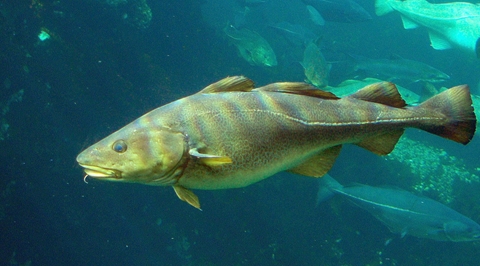
A cod fishing in the North of Europe

Cod from the North Atlantic
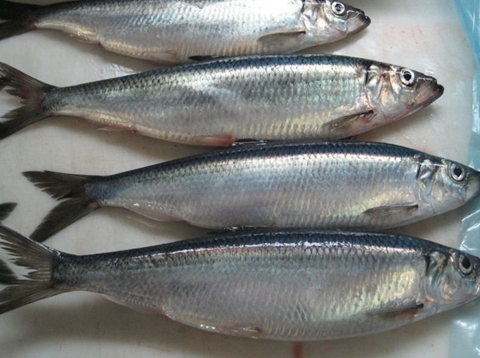
Herring from Norway
The etymological origin has some doubts, although the RAE (the Spanish Royal Academy of the language) affirms that it comes from the bakailao (cod in euskera = the language from the Basque Country) and this one, in turn, of the Dutch bakeljauw, variant of kabeljauw, that justifies the French cabillaud, that refers to the fresh cod in front of the dry one, morue.
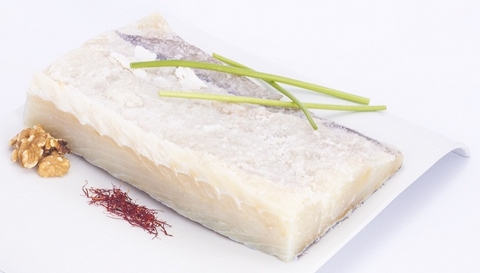
Fresh cod
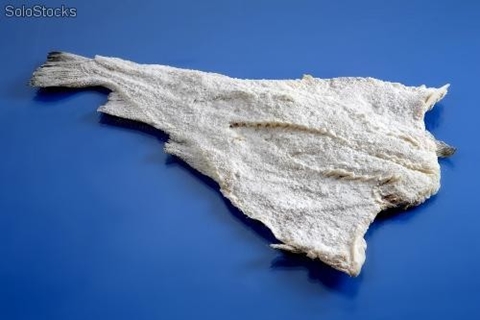
Dry cod
Cod in salting is a processed form of cod, that consists of practicing salt drying (salting). This presentation makes it possible to be kept, in a dry place, for several months. Cod is appreciated for its meat and for the oil of its liver. Cod liver oil is extremely rich in Omega-3 fatty acids, as well as in vitamin A and vitamin D2. In fact, these properties were heavily exploited for years, crude oil being supplied to children, as a food supplement for the fixation of Calcium, in the bones.
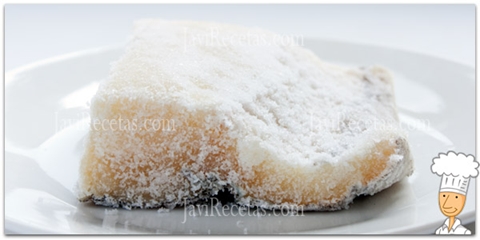
Salted fish
Other similar edible species include haddock, Pacific cod and haddock. The last one, in particular, has been exhausted, by the trawls net of large factory ships.
Cod is also subject to abusive fishing, in the North Atlantic, where, since the 16th century, European ships have been fishing, especially in Newfoundland and Great Sun. The economic, social and cultural importance of this fishing is evidenced by the numerous clashes between the powers, for the control of the fishing grounds, which is the origin of the current system of Maritime International Law, the development of human settlements, of enormous importance, and many literary works.
The cod can be consumed frozen or dry, being habitual the salting for its conserved in dry. This last one allowed, for many European continental populations, to have protein reserves, for centuries, --the dry cod contains 62 gr per 100 gr of edible portion and 17,81 without desiccation--. In fact, many of the trips,of the Iberian navigators, would not have been possible, without this product.
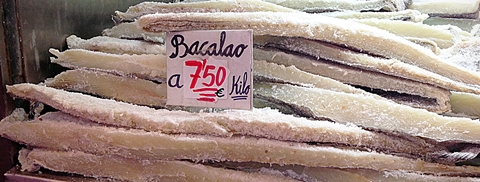
Salted cod for freeze
There are numerous recipes for cooking cod, grouped into five large culinary families: raw (esqueixadas, sushis), roasted (ember), in sauce (a la Biscayne, from Biscay, in the Basque Country), with oil (pil-pil, Braz), with cream Milk or butter (with cream, convent) and sweet (to honey). The cod "Club Ranero" is a variant of the cod to the pil-pil, to which is added a fry of peppers. It owes its name to the Ranero club of Bilbao, when the chef Caraveriere had to supply, with peppers, the lack of other ingredients.
Cod, in its diverse forms of preparation, is a common dish in countries like Spain, Portugal, Mexico (Christmas Dinner), Jamaica, Panama, Puerto Rico and Dominican Republic. It is the most important food in Portugal (the dish is named “Bacallao á braz”, “Grilled cod”), made with potatoes, onion and beaten egg and, when finished, decorated with black olives.I tested this last recipe, several years ago, and I loved it.
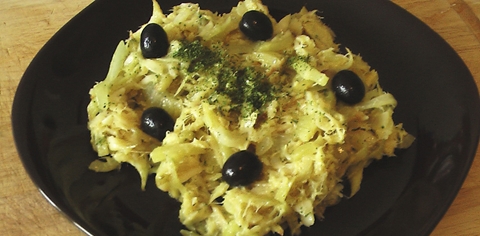
Grilled cod
And today I would like to show you the recipe of "Cod to Biscayne".
Now, I am going to show you the Ingredients (for 4 persons):
- 4 loins of cod (desalted)
- 6 onions (3 red and 3 white).
- 6 garlic cloves.
- 10 dry red peppers (choriceros peppers).
- Extra virgin oil.
- Salt.
- Parsley
Note: I like very much this dish with potatoes in slices; but, the original recipe has no potatoes.
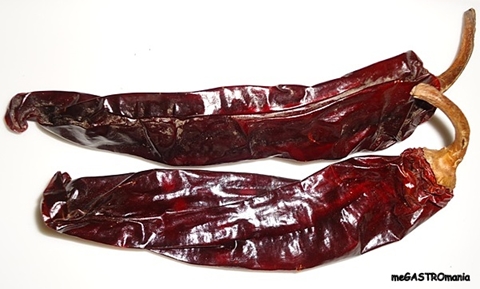
Dry red peppers
This is what you have to do with those ingredients: Remove the tail and pips, from the dry red peppers. Cook them, in a pan, with water, for 10 minutes. Drain them, remove the meat and punch it. Reserve it.
Next, peel 6 cloves garlic and fry them lightly, in a lunch box, with plenty of oil (100 ml). Put the cod (for the part of the skin) and crystallise it, for about 4 minutes (2 minutes on each side). Remove the cod and reserve.
Of course, you have to remove the salt from the cod, before cooking.How to do that?; well, my father --who was a very good chef-- put the cod into cold water and left it so during 48 hours.
Chop the onions, in dice, and add them to the lunch box. Fry it lightly, over medium heat, until tender. Add the meat of the dry red peppers and cook everything, for 8-10 minutes. Grind.
Put the pieces of cod, in the sauce, and let cook during 5-6 minutes. Serve and adorn with some parsley leaves.
And this one nust be the result:

Cod to Biscayne
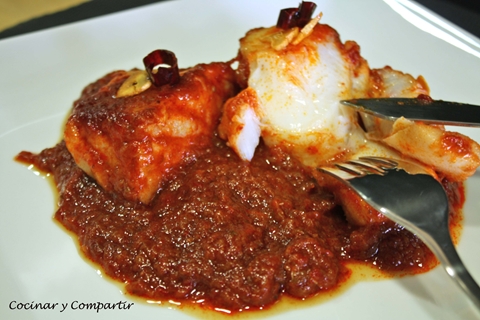
Cod to Biscayne on the plate
Well, I hope that you want to try to cook this recipe and, if it is so, please tell me it.
Until my next post, kind regards,
Luis.
Sponsored by Costaluz Lawyers.
Please click below:

 1
Like
Published at 1:15 PM Comments (1)
1
Like
Published at 1:15 PM Comments (1)
A Spanish hospital creates two lunar modules for children
Wednesday, November 23, 2016
Today, I have found a news, which I knew a few days ago: "Two rooms of the Gregorio Marañón converted into lunar modules".
Effectively, traveling to a lunar station, to contemplate the universe and unleash the imagination, is an experience at hand, for children, in cancer treatment, at the “Hospital Maternal and Child of the Gregorio Marañón”, in Madrid. Small astronauts, with their imagination, can travel to a lunar module and change the fear of an uncertain environment by the curiosity to explore "a fascinating world", in a mission, where they only have the control.
 as an astronaut in her room a 40 mm.jpg)
A girl (Daniela) as an astronaut in her room
"This change in relation to the environment has profound repercussions on a psychological and physical level", explains Mario Alonso Puig, Doctor and honorary Master of JUEGATERAPIA, the Foundation, that has launched this project, in collaboration with Play Office.

Mario Alonso Puig
Children sick with cancer are subjected to "a very hard test" as it is to receive the treatment in conditions of isolation. Facing an "uncertain, ambiguous and complex environment sets in motion a stress reaction" in any human being, but ”the relaxation and serenity ", associateed with the game, “favour the activation of the parasympathetic nervous system, that favour the cellular functioning and the repair of the tissues", explains Puig.
The two rooms, converted into lunar modules, at the Hospital Maternal and Kid of the Gregorio Marañón, allow children to have control over details, such as the intensity and colour of the lights, the music they want to hear, on the speakers, the movie they want to see or if they feel like to play to the Play Station.
The Play Office studio, which has designed the rooms, explains that it is not a question of creating an extension of their home, since they know they will only be there for a while, but to generate an atmosphere that will help them to distract themselves, "channel their emotions and broaden the range of activities, which the children have access to, when they are in isolation".
When the small astronauts arrive, at the lunar module, they find the following words: "The lunar station can only be visited, for a certain time, when it is necessary to do some type of study or exploration. It is a privileged place, to see the stars, the universe and listen wonderful stories. When you leave, you will have many things to tell".
As I told you, at the beginning, I knew this new –about the lunar modules, in the Gregorio Marañon Hospital--, because, one week ago, more or less, I could watch, on tv, these rooms, with some children, with the President of the Community of Madrid (Cristina Cifuentes) and the spanish Astronaut, Pedro Duque.
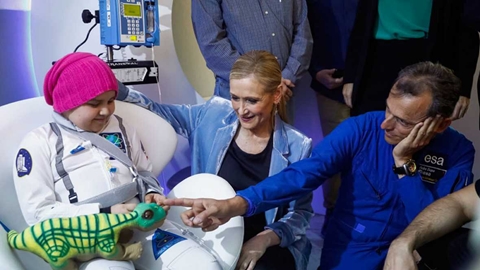
Cristina Cifuentes asnd Pedro Duque with Daniela
Children, who have to undergo treatment under isolation conditions, to be protected from infections, face a test "very hard at a very early moment in their life", explains Puig. They change their home, in an unfamiliar and complex environment, for an environment more associated with pain, than with enjoyment, explains Mario Alonso Puig, and this situation triggers a stress reaction, that activates the amygdalin nuclei of the brain, that function as "detectors of danger".
The result of this stress especially damages the fight, against the disease, causing a reduction in the lymphocytes, a type of white blood cells, that forms an important part of the immune system, and an increase of inflammatory cytokines, proteins that regulate the interactions of the cells of the immune system .
The JUEGATERAPIA Foundation (the promoter of the project, in which it has worked during the last two years) takes the game to the children, in treatment, as a way to escape from their reality. "It returns them to the normality of what should be their life", explains Lourdes Amayas, spokeswoman of the Foundation, that has by motto "Playing the chemo, it spends flying".
With these children, there is no need to limit play time, as it does when children are healthy and at home. This distraction gives them strength to fight against their illness. Meanwhile, the family environment is "fundamental", explains Lourdes Amayas, who hopes that the Foundation can work to turn all hospitals, into "joyful and pleasant places for children”.
Well, I agree with Lourdes Amayas; but, by the moment, I am glad knowing this nice project, in the Gregorio Marañon Hospital.
Until my next post, kind regards,
Luis.
Sponsored by Costaluz Lawyers.
Please click below:

 0
Like
Published at 9:27 AM Comments (0)
0
Like
Published at 9:27 AM Comments (0)
A team of Spanish researchers has designed a genetic technique to correct blindness
Monday, November 21, 2016
Yesterday I could find a so interesting and important news and I would like to share it with you: “A new genetic technique partially corrects blindness in mice”.
A team of Spanish researchers has designed a new gene-editing technique, with which they have been able to partially correct vision in blind mice. The scientists, led by Juan Carlos Izpisúa-Belmonte, from the Laboratory of Genetic Expression of the Salk Institute (La Jolla, California), have managed to enter in a specific location of the non-dividing adult cells --not able to regenerate tissues or organs-- , for the first time, and modify damaged DNA.
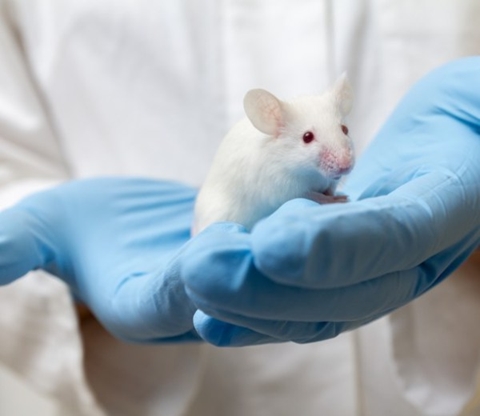
A little blind mouse in the laboratory
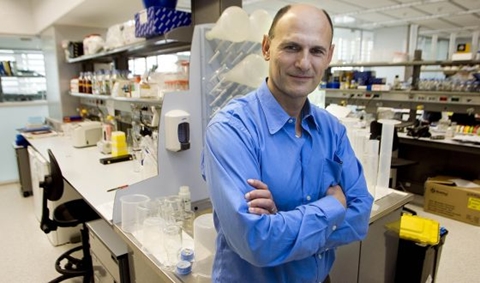
The scientist Juan Carlos Izpisúa-Belmonte
The results of this work, which, according to those responsible, open the door to apply this technique to other monogenic diseases, for their treatment, are published in Nature, in an article signed, in addition to Izpisúa, by scientists at the Hospital Clínic, in Barcelona, the Catholic University Of Murcia and the Cemtro Clinic of Madrid.
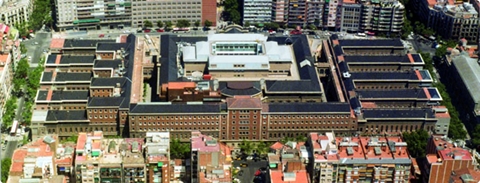
The Hospital Clinic
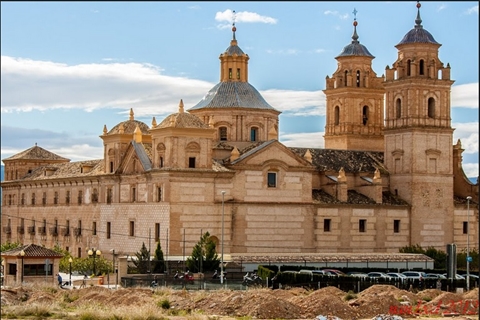
The Catholic University of Murcia
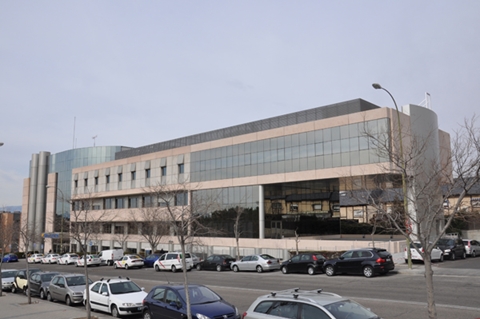
The CEMTRO Clinic
Until now, existing techniques to edit genomes, in a simple and precise way, and to manipulate the DNA of plants, animals and humans, such as the CRISPR-Cas9 system, they have been more effective, in dividing cells, such as the skin or the intestine, the authors remember.
The novelty of the technique, described in Nature and called "HITI" (inspired by CRISPR among others), is that it has been applied,for the first time, in cells that do not divide themselves, confirms to Efe Jerónimo Lajara, of the Catholic University San Antonio of Murcia (UCAM).
Cells, that do not divide themselves, when they are sill, they do not have a chance of regeneration, as in the case of retinitis pigmentosa, a disease that causes the progressive destruction of the pigment epithelium cells of the retina, causing a narrowing of the field of vision, until it is at a minimum .
The experiments of this work have been done, in mice, with this disease, which in Spain causes blindness to 25,000 people. What researchers have done is to insert DNA, in a specific location, into non-dividing cells: "For the first, time we have managed to cut the part of the anomalous gene and stick it to a normal gene, so that the diseased cell recovers", according to Lajara.
Thus, the scientists managed to partially repair the blindness of the mice. To calculate the recovery, they applied an electroretinogram, to the animals, a test similar than electrocardiogram, that measures the signal that the retina picks up and transmits to the optic nerve.

Electroretinogram
For the Ophthalmologist, from the UCAM, the key is not so much the Retinitis pigmentosa, though also, but the own technique of cutting and pasting genes, because it opens the door to new avenues, for basic research and for the development of a great variety of treatments of retina genetic, neurological or cardiac pathologies.
The new technology "is ten times more efficient" than other methods, to incorporate new DNA, into cultures of dividing cells, according to some notes from the Cemtro Clinic and the Clinic Hospital. "We are very excited, about the technology, that we have discovered, because it is something that could not be done before", Izpisúa indicates in the note: "for the first time, we can enter cells, that do not divide themselves and modify DNA, the possible applications are huge".
For Pedro Guillén, founder of CEMTRO Clinic and another of the authors, "the procedure demonstrates that DNA fragments can be introduced into the human genome, opening possibilities for treating diseases of other organs, such as kidney, heart, brain, cartilage and musculoskeletal system”.
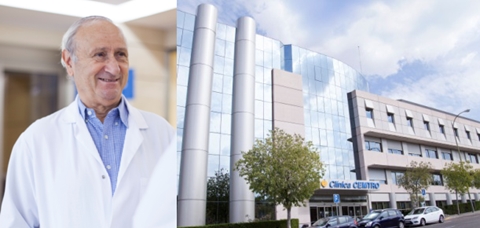
The Doctor Pedro Guillén and the CEMTRO Clinic
For his part, Josep María Campistol, General Director of the Clínic, has added that this innovative technology will open new horizons, in the treatment of monogenic diseases, "Izpisúa and his team are making so important contributions in this field" .The next step will be to improve the efficiency of the technique.
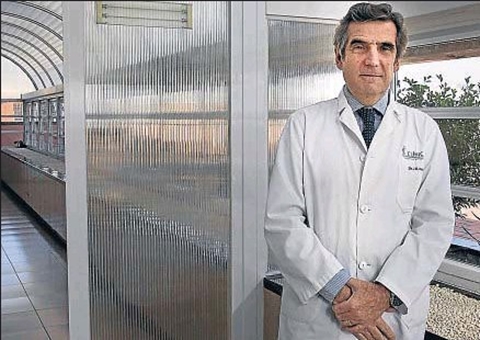
Josep Maria Campistol
"We now have a technology, that allows us to modify the DNA of cells, that do not divide themselves, to fix damaged genes in the brain, heart and liver", Izpisúa Belmonte summarizes: "It allows us, for the first time, to dream of healing diseases, that before we could not heal, which is very exciting".
Well, I hope that Spain could ope new doors to discover some new treatments, to finish with those diseases, described above.
Until my next post, kind regards,
Luis.
Sponsored by Costaluz Lawyers.
Please click below:

 0
Like
Published at 9:36 AM Comments (0)
0
Like
Published at 9:36 AM Comments (0)
Spanish archeologists believe they have found the largest site of Tartessos in southwestern Spain
Friday, November 18, 2016
I have just found an interesting news: “An archaeological excavation in Badajoz foresees to bring to light the largest site of Tartessos”.
The archaeological excavation of Turuñuelo, located near Guareña (Badajoz), in the Guadiana Valley, will reveal the largest site of the Tartessic culture, the mythical pre-Roman civilization, that occupied, 2,500 years ago, the southwest of the Iberian Peninsula .
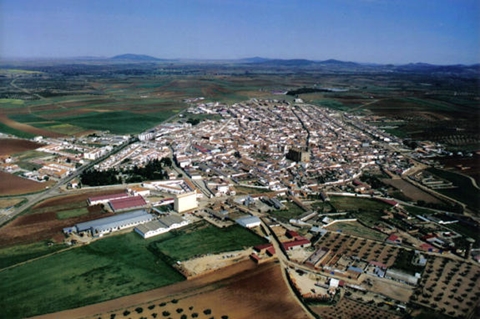
A general View of the village of Guareña
This is something that the Director of the Institute of Archeology of Mérida (IAM) and one of those responsible for the excavation, Sebastián Celestino, is clear about it; he, in statements to Efe, has emphasised that the state of conservation of Turuñuelo is "magnificent" , with "whitewashed and well-lined walls, up to two and a half metres high".
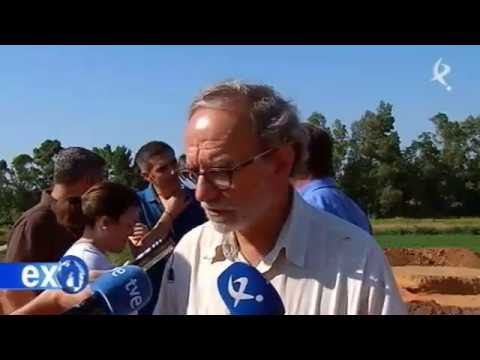
Sebastián Celestino on the site of Turuñuelo (Badajoz)
Celestino, also responsible for the excavation of the Cancho Roano Sanctuary, located ten kilometers from the locality of Zalamea de la Serena and (of Badajoz) and until now considered as the Tithesian world type site in Extremadura, has explained that Turuñuelo is the "triple of Large", since it is estimated that it has one hectare of extension.
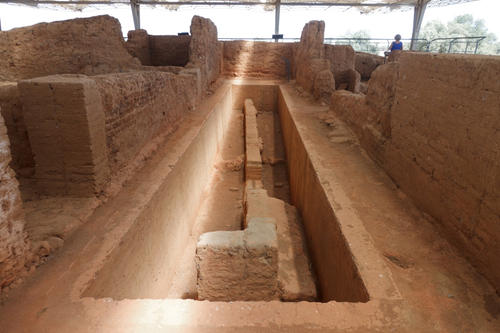
Cacho Ruano (Badaoz)
If more than 30,000 archaeological pieces appeared in Cancho Roano, the wealth of the new Guareña site, which this summer has experienced its second excavation campaign, can be incalculable and it shall shed much light on the enigmatic civilization of Tartessos.
Located between the provinces of Huelva, Seville and Cadiz, the kingdom of Tartessos, emerged from the union of Phoenicians and Iberians and with "a very strong Mediterranean flavour", it suffers a deep crisis, in the sixth century, that makes it migrate, to a rich and more protected are, like the Valley of the Guadiana, where about twelve sites of this civilization are located.
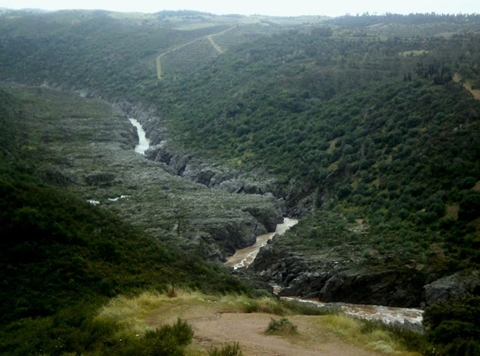
The Valley of Guadiana
According to the Director of the Archaeological Institute of Mérida, this village has left its most important vestiges in Extremadura, because, when they were invaded by the Celtic peoples of the north, they "buried and sealed their sacred places, in order that they were not violated", therefore the magnificent conservation of sites such as Cancho Roano and Turuñuelo.
In the latter, what has been excavated so far, which "is very little", has brought to light a cabin of about 70 square metres, that was the worship space of the enclave, "with an altar in the centre, benches" and a bathtub, considered as one of the most extraordinary finds of the excavation, an element "hitherto unknown" and that could be dedicated to do "some ritual related to water".
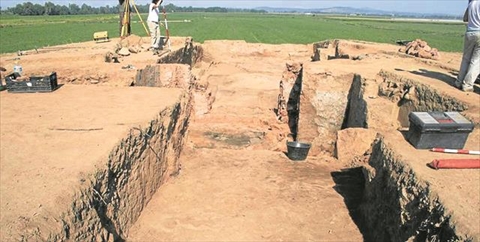
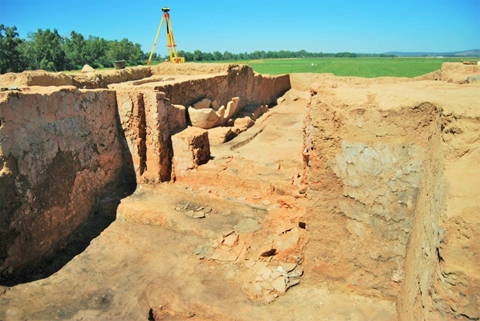
A house in Turuñuelo
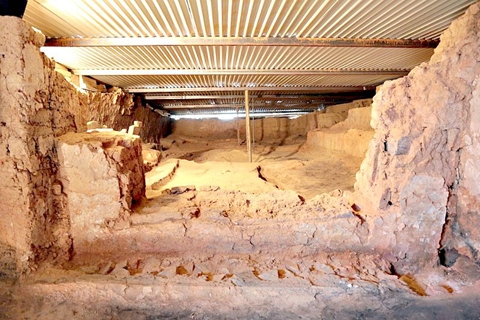
The main room
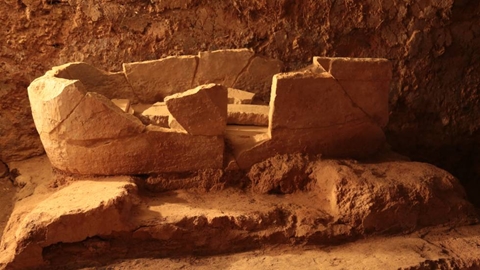
A bathtub in Turuñuelo
There are also numerous pieces related to food: a large cauldron, rotisseries or jars, all made of bronze, which "draws much attention, because we are in the first iron age and almost everything is already made in that material". However, bronze, according to Celestino, "remains a metal, that devotes much to worship", as do ivory and other "pretty sumptuous" elements, that have also appeared.
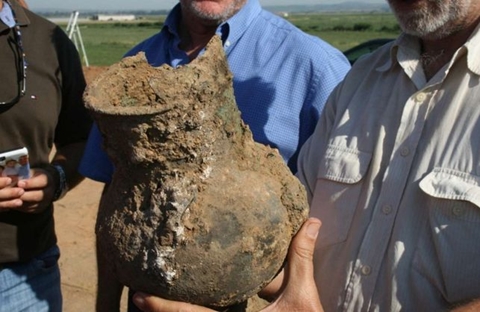
A pot of bronze found inTuruñuelo
In the Turuñuelo, a hundred pieces of pottery, "in a state of magnificent preservation", have also been found, what makes it possible to clearly establish the exact date of its manufacture, at the end of the fifth century, since "Greek ceramics allow us to know even the workshops, where they were made in Athens"..
Sebastián Celestino has explained that the pottery, at that time, came from Greece, through Ampurias and then it was distributed throughout the Iberian Peninsula, where there were distribution centres, such as the Iberian Roman city of Cástulo, in Jaén, and probably the Turuñuelo, in Badajoz , since "trade has always worked on this way".
In that sense, the Director of the excavation considers that, probably, the rest of the buildings of the site of Guareña have "a more administrative character or of warehouses".
The numerous pieces, that have appeared so far, in the Turuñelo, have been transferred to the Institute of Archeology of Merida, dependent of the Higher Council of Scientific Investigations (CSIC) and of the Regional Government of Extremadura, where they are being studied and cataloged.
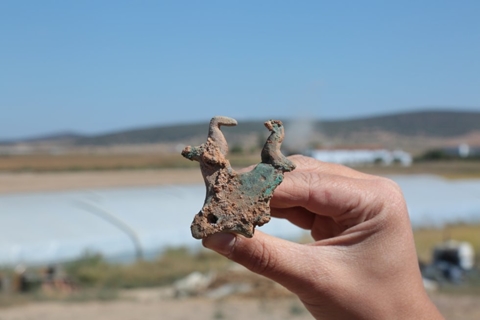
Two pigeons with a bullskin
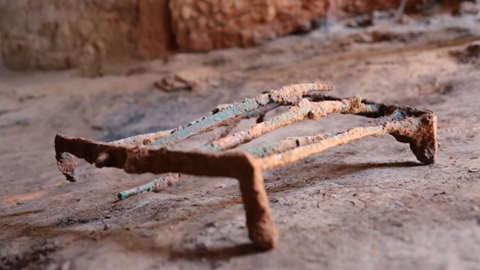
A grill in the Institute of Archeology of Merida
However, to preserve the bronzes better and they do not oidise, they have been taken to the Prehistory Laboratory of the Autonomous University of Madrid, for their restoration and preparation, before being transferred to the Archaeological Museum of Badajoz.
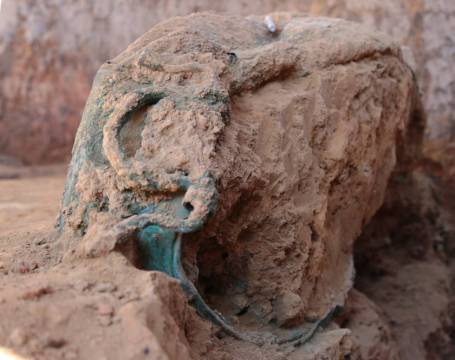
Cooking pot of bronze in Turuñuelo
Meanwhile, Sebastián Celestino and his companion Esther Rodríguez, who runs the works with him, in the site of Turuñuelo, are seeking funding, to continue with this "expensive" excavation, financed so far by the Regional Government of Extremadura, in its first campaign, with Feder funds; and by the Ministry of Economy and Competitiveness, in its second one, with investments for R & D.
Well, I hope that you have considered this article such important as I did.
Until my next post, kind regards,
Luis.
Sponsored by Costaluz Lawyers.
Please click below:

 0
Like
Published at 9:52 AM Comments (0)
0
Like
Published at 9:52 AM Comments (0)
Several specimens of the largest butterfly in the world are born in Eastern Spain
Wednesday, November 16, 2016
Yesterday I found a curious news: "The biggest butterflies of the world are born in the Oceanografic of Valencia".

Oceanografic of Valencia, eastern Spain
The last Friday, the Oceanogràfic of Valencia has hosted the birth of a group of Attacus Atlas, the largest butterfly in the world, a species native to Southeast Asia, whose wings have a wingspan of about 30 centimetres.
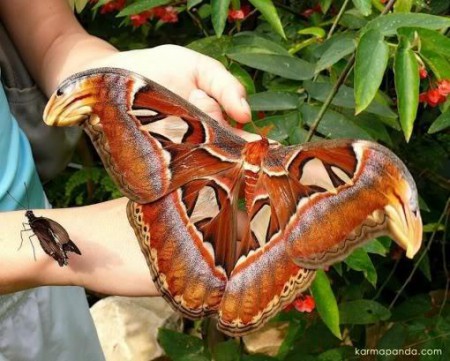
Butterfly Attacus Atlas
The butterfly Atlas (Attacus atlas) is a species of ”ditrisio lepidopteran” of the family Saturniidae. It is the largest representative of the family. Female specimens are larger and stronger. The largest lepidopteran is the “white devil” (Thysania agrippina). Its scientific name derives from the name of the “Atlas titan” of Greek mythology. In Hong Kong, in Cantonese, its common name translates as "snake-head butterfly", in reference to the apical extension of the wings, which bears a resemblance to such a snake head.

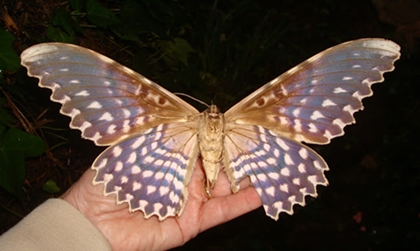
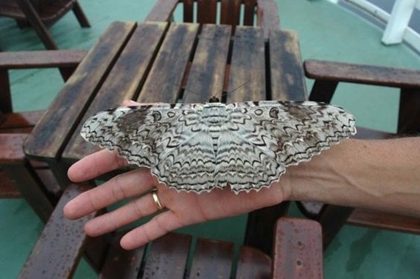
Both sexes have, by the size of their wings, a heavy form of flight, carried by the direction of the wind.
It inhabits the tropical forests of Southeast Asia, southern China, through the Malay archipelago to Indonesia. In India, Atlas butterflies are grown by silk, in non-commercial proportions. Unlike the silk, produced by the silkworm (Bombyx mori), the caterpillar silk of the Atlas butterfly is secreted in non-continuous threads. This silk (called "fagara") of brown colour, and similar to the wool, is appreciated by its great durability. In Taiwan, chrysalis of the Atlas butterfly are used to make wallets.
These lepidoptera live only a few days, since they have no digestive system and, therefore, they can not feed on, during their adult phase.
However, they get all their energy from the fruit-leaf feeding, during their caterpillar phase.

A caterpillar of Butterfly Atlas

Butterflies Attacus Atlas in the Oceanografic
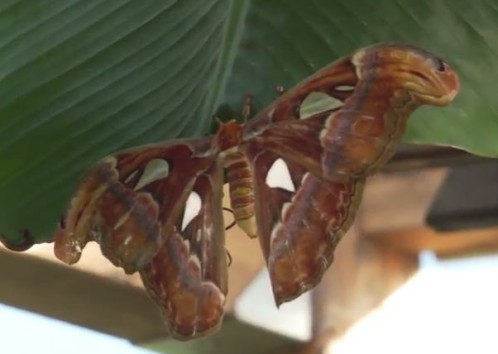
A buuterfly Attacus Atlas close up
Well, I hope that you have liked this article. And I hope that you can come to Spain, to visit the Oceanografic, if you do not line in Spain.
Until my net post, kind regards,
Luis.
Sponsored by Costaluz Lawyers.
Please click below:

 0
Like
Published at 10:04 AM Comments (0)
0
Like
Published at 10:04 AM Comments (0)
Spanish scientists develop a project to obtain bioplastic from cheese
Tuesday, November 15, 2016
Although I do not like to eat cheese I would like to show you a video, that explains how to obtain bioplastic from whey. If you want to watch this video, please click on the link below:
http://www.rtve.es/alacarta/videos/agrosfera/agr-ldi-suero/3743752/
You can read, on the image: Bioplastic from lactic whey. A round cycle to pack cheese.
Voice in off: “To make one kilo of cheese, nine litres of whey --considered a residue-- are generated. The cheese industry, in the European Union, produces 75 million tonnes of whey, a year, which is an important environmental problem".
Miguel Alborch (Organiser of the project Life “Wheypack”): “Although much of this amount is reintroduced in the process, to obtain other types of cheese or other type of products, about 40% has to be managed by the own company, as a residue”.
Voice in off: “In AINIA TECHNOLOGY CENTRE, they have obtained a first generation of bioplastic, with the help of microorganisms”
Ana Torrejón (Researcher Technology Centre AINIA): “They take, sources of carbon --in this case: lactose, which is what is in the whey--, they accumulate inside it and, inside, what they do is a transformation, which converts that lactose into PHB; they keep it, as a source of energy, and what we do is to try that they keep as much as possible, then take it out and obtain the plastic”.
Voice in off: “The result is a polymer, known as PHB, completely biodegradable, but lacking the resistance, which the market demands to be used as a tin; that one will be a second phase of the research”.
Miguel Alborch: “They need to be improved, to be improved their impact resistance capabilities; breaking resistance; the permeability capacities, against the gases; it needs to be improved and take additive and be improved its characteristics”.
Voice in off: “There, the other associates of the project come on the scene: the Plastic Technology Institute (AIMPLAS) and the Portuguese packaging company (EMBALNOR). There is also an important Spanish cheese industry, which participates in the research and will be a beneficiary of the results”.
Ana Torrejón: “Really, what we are getting is to close the cycle. Then, from a material, which is a product that does not have an use, you are giving it a second life, you are getting a product that, in addition, will serve to pack the own cheese, which gives rise to the whey; ie, it is a round project”.
Voice in off (Paco Alonso. Editorial office Valencian Community): “The final bioplastic will have the same characteristics of the traditional plastic tin; but with a carbon footprint, lower than which is generated by the current process, for the production of plastics, derived from petroleum”.
Well, I hope that you have lied this article.
Until my next post, kind regards,
Luis.
Sponsored by Costaluz Lawyers.
Please click below:

 0
Like
Published at 9:27 AM Comments (0)
0
Like
Published at 9:27 AM Comments (0)
Spanish scientists working on the universal vaccine of influenza
Monday, November 14, 2016
Today I would like to talk to you about a very important news for all Humanity: “Spanish scientists are moving towards the universal flu vaccine with the help of bioinformatics”.
Spanish scientists have succeeded in advancing two prototypes of universal influenza vaccine, in order to be effective against all strains of the disease. To do this, they have used T-epitopes, in vaccines, and have used bioinformatics, to predict how humans would act on them.

Two prototypes of influenza vaccine
The results of the research, by these scientists, have been published recently in the journal Bioinformatics and its leaders are from the Complutense University of Madrid (UCM), the University of Lancaster and the University of Aston, the latter two in the United Kingdom.
Influenza is an acute viral infection, that is easily transmitted from one person to another; there are three types of seasonal flu (A, B and C) and vaccination is the most effective way to prevent it, according to the World Health Organization (WHO), on its website. However, because of the high ability of viruses to vary, since their strains change each year, the vaccine must be updated and administered every year.

A new strain of influenza

It is the WHO, that annually publishes recommendations on the content of the vaccine, which is mostly made from viruses grown in embryonated hen eggs.
Influenza vaccines, like others, act by "teaching" the immune system to fight the virus later: when a person is given a vaccine, the immune system recognises the components of the vaccine as "foreign", it combats them and develops a new type of immunity, that protects you against future infections. During this process, the immune system recognises and memorises certain parts of the virus.
However, this choice does not need why be the most appropriate. In fact, the flu virus precisely changes / mutates those parts, that are primarily recognised by the immune system.
"Therefore, we do not have an universal vaccine against influenza, but every year we have to prepare a specific one, for virus subtype, that is expected to be prevalent", Pedro Reche (one of those responsible for the work). emphasises to EFE.
And then how to create an universal vaccine? .This researcher from the UCM points out that instructing the immune system, to focus on small fragments of the virus, that are susceptible to be recognised --we call them epitopes-- and that are invariant. Specifically, the researchers propose a formulation of an universal vaccine, using T-epitopes.

These are small fragments of the virus, capable of being recognised by T lymphocytes, essential leukocytes in the containment and elimination of viral infections.
The T-epitopes, used in the formulation of these vaccines, have been experimentally validated by independent research groups.
"Curiously, although these epitopes are recognised by the human immune system, not everyone recognises the same T- epitopes", Reche stresses. He adds: “A key part of our work has been the use of computational models, to predict which individuals might recognise a particular epitope”.
Thus, they have managed to design two different formulations, for two universal vaccines, that have not yet been tested, in clinical trials; Scientists are contacting different pharmaceutical companies, to develop inoculations.
According to Reche, the ascertainment of its efficacy, in animal models, would be complicated, but perhaps it is not necessary: the T- epitopes, used in this study, are capable of inducing the immune response, in humans, and could be directly tested, in a clinical trial.
The T-epitopes would represent the active component, but it would have to be supplemented with other components, among others.
Vaccines protection coverage would be 95%, in the US population, and among 88% and 97%, in the rest of the world. The variation, in these percentages, is due to the genetic distinctions, between humans; in particular, the variability is found in molecules related to the immune response.

Stages of the Inmune Response
For Reche, this work is a great advance, in the achievement of a universal vaccine --there are several research groups, working in this direction--; but, still "several years are away".
Well, I hope that researchers make the most of those years to commercialise a single vaccine, to make many people have a more confortable life, all over the world.
Until my next post, kind regards,
Luis.
Sponsored by Costaluz Lawyers.
Please click below:

 1
Like
Published at 9:50 AM Comments (0)
1
Like
Published at 9:50 AM Comments (0)
Spanish scientists have discovered the antioxidant power of strawberry seeds
Thursday, November 10, 2016
Today I would like to talk to you about some good news, that has occurred in Spain: “Some Spanish scientists have discovered that strawberry seeds contain 81% of antioxidants”.
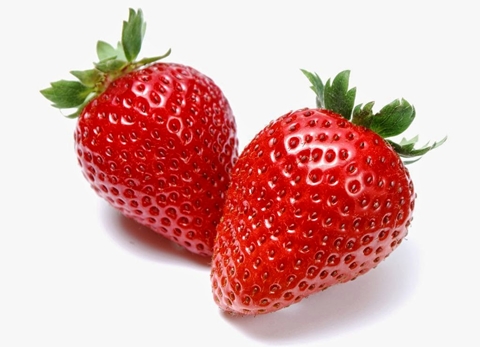
Strawberry pips contain the most antioxidants of this fruit, 81% of the total, as demonstrated by researchers at the Research Institute for Agricultural and Fisheries Training (IFAPA) of the Government of Andalusia, in collaboration with the Universities of Vigo (Galice, northern Spain) and Marche (Italy).
Scientists have reached these results through a simulation process of digestion, performed in the laboratory, what has allowed them to quantify the antioxidants of strawberries, that are released in the stomach and intestine, as the Discover Foundation has informed, in a statement.
The pips are 7.5% of the dry weight of this fruit, "therefore, it is even more striking that, despite its size, the pips contain the antioxidant power", as has explained the researcher, Maria Teresa Ariza, from the area of Genomics and Biotechnology, at the Ifapa.
The researchers have conducted "a bioavailability study to check the components, that these products emerge in the stomach and, on the other hand, bioavailability, to learn which of these may pass into the bloodstream", Ariza has indicated; antioxidant compounds, analysed in this work, have mainly been phenols, flavonoids and anthocyanins.
The methodology used, to reach these conclusions, published in the International Journal of Molecular Sciences, under the title “The Achenes of strawberries are an important source of bioactive compounds for human health”, it refers to the process of simulation, in vitro digestion.
This consists in introducing, into a glass beaker, a certain amount of strawberries and pips with water, to, from there, with a probe, measure the pH or acidity and decrease, at a figure of 1.8, which is the same as it has a normal empty stomach; to this mixture, is added pepsin, the enzyme responsible for digesting food.
The composition is maintained for two hours and from it is extracted a small portion of liquid, called gastric fraction, which is the one analysed and where the antioxidant compounds, detached from the achene and strawberry, are observed. The same procedure is performed, in the simulation of intestinal digestion, which is performed in the intestine.
This methodology has allowed to determine that the pips, after gastric digestion, release a higher proportion of antioxidants than the pulp or red part of strawberry.
The Strawberry is one of the fruits lowest in calories, it is also diuretic and very rich in fiber; so it helps the intestinal transit. Thanks to these characteristics, it is the best ally to reduce a little gut. It is an excellent source of vitamin C, beta carotene and vitamin E, the three main antioxidants. The consumption of this spring fruit is especially recommended in diets to prevent cardiovascular diseases, cancer, arthritis, gout and anemia. And as if that weren’t enough, it has an acid (ellagic), that neutralizes the most negative effects of tobacco. Among the minerals, that it possesses, are calcium, iodine, phosphorus, magnesium, iron and potassium. It also contains folic acid and, in the natural medicine, it is used to clean and purify the digestive system.
It is also known that strawberries juice has antibacterial properties, because of the presence of carotenes, and they are perfect to complete the diet of people who do not eat meat, because the vitamin C, that they contain, helps the absorption of iron.
The consumption of strawberries is not recommended in patients with kidney disease, diabetes and other gastrointestinal disorders (gastritis, delicate stomach ...).
I take this opportunity to talk to you about the "Strawberries of Huelva" (Costa de la Luz, Southwest Spain).
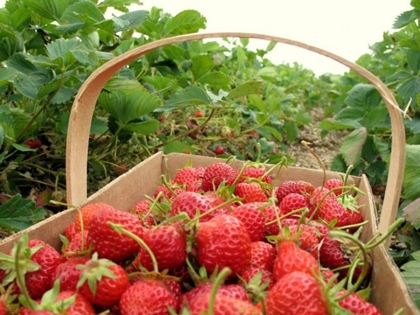
The strawberries of Huelva are the third most exported product from Spain.
The strawberries of Huelva have joined the list of ambassadors of the candidacy to the gastronomic capital of Huelva, for the next year 2017.
Up to 30 companies produce strawberries, in Huelva, distributed by the villages of: Palos de la Frontera, Moguer, Bollullos del Condado, Lepe, San Bartolomé de la Torre and Isla Cristina.
The company Masiá Ciscar, S.A., located in the village of Lepe, began producing strawberries in the 70s.
This company produces and commercialises strawberries through the company S.A.T. Las Palmeritas.
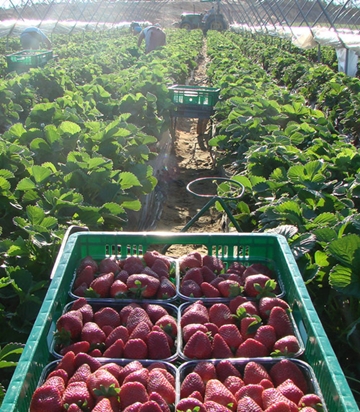
Farm crop of Masiá Ciscar, S.A.
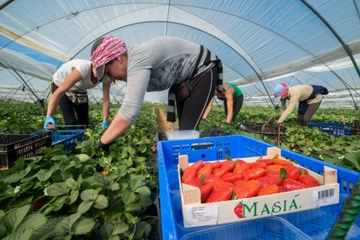
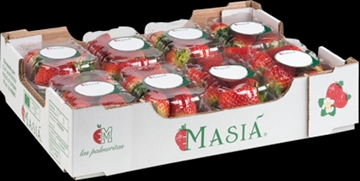
Specifically, they commercialise two varieties of large strawberry: Primoris and Sabrina.
In Masiá Ciscar, they analyse, on the one hand, if the varieties, which are currently planted, can be substituted for others, that clearly improve what there is already; and, on the other hand, it is also studied whether a new segment of the market, which is not satisfied with the cultivated material, can be supplemented with some variety in trial.
Likewise, to produce a varietal change, in the company, it requires a minimum of three years. This period comprises the time elapsing between the test of the test of the own field test and its production, at commercial level and large scale.
On the other hand, Masiá Ciscar S.A. collaborates with other improvement programs in strawberries in Huelva, evaluating advanced selections of them, in order to get the best product for consumers. These advanced selections are in a second test field.
To these advanced selections, which can range from 20 to 30 a year, are evaluated for quality (colour, Brix grades (Brix grades serve to determine the total quotient of dry matter (usually sugars) dissolved in a liquid), post harvest and hardness), precocity, production and, subsequently, multiplication in nursery. Of all of them, only a maximum of three (the best three) make the cut and, the following year, they are evaluated, with greater quantity, in the test field.
Well, I hope that you have liked to know about strawberries and specifically about strawberries of Huelva.
Until my net post, kind regards,
Luis.
Sponsored by Costaluz Lawyers.
Please click below:

 0
Like
Published at 9:48 AM Comments (0)
0
Like
Published at 9:48 AM Comments (0)
Spanish researchers discover a component of cannabis against tumors
Monday, November 7, 2016
Today, I would like to tell you an encouraging news, a wonderful discovery to help many patients, worldwide.
Effectivelly, researchers at the Complutense University of Madrid (UCM) and the Institute of Health Research “San Carlos”, have found that the main active component of cannabis, THC (delta-9 tetrahydrocannabinol), is capable of killing tumor cells, through the mechanism of 'cell recycling' or autophagy.
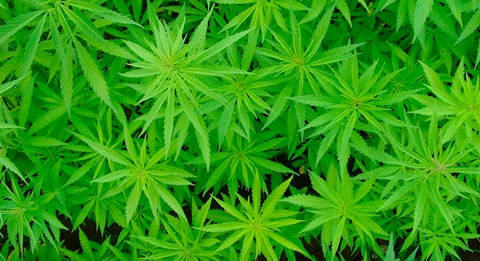
Marijuana plant
In fact, this process, with which the cell degrades and recycles its components, has earned him the Nobel Prize, for Medicine 2016, to one of its discoverers, Yoshinori Ohsumi.
"We have identified one of the factors that determines that activation of autophagy leads to the death of tumor cells", has explained the researcher at the Department of Biochemistry and Molecular Biology of the Complutense University of Madrid (UCM) and lead author of the work, Guillermo Velasco.
To perform the study, published in 'Autophagy', the scientists have used a cell culture of glioma (a very aggressive brain tumor) and they have subjected them to two treatments separately: lack of nutrients and supply of THC. Previous studies, they had already shown that, in both cases, the cell is induced to initiate the process of autophagy, although two different ways.
Specifically, the lack of nutrients increases the protective autophagy, which occurs when cells activate it to digest the complex cellular components and get the necessary energy to adapt to this situation of fast itself. In this sense, in the case of THC, what it increases is a more destructive autophagy.
In comparing the changes, occurring in the cells, after the absence of nutrients or supply cannabinoid, the scientists have found that single treatment, with THC, increased levels of some lipid (dihidroceramidas) that eventually triggered death the cell.
"The study shows that increase, in levels of some dihidroceramidas, has a destabilizing character for cell organelles, involved in the degradation of cellular components, leading, ultimately, to the death of tumor cells", Velasco has noted.
In the same way, the work has also shown, in studies in vitro and generated tumors in mice, that manipulation of levels of these lipids can be a strategy to activate an autophagy leading to death of tumor cells, reducing tumor growth.
"These observations may help lay the foundation for the development of new cancer therapies based on the activation of death through autophagy", the scientist has claimed, to comment that, at the same time, the study helps to understand the mechanism action of cannabinoids, into tumor cells, a field of study, that the department of Biochemistry and Molecular Biology of the UCM has spent over a decade working.
At the work, he has also counted on the participation of experts from the Institute of Advanced Chemistry of Catalonia, the Institute of Biophysics (UPV / EHU-CSIC), the University of the Basque Country, the Danish Cancer Society Research Center (Denmark), the University of Newcastle (UK), the Center for Biological Research (CSIC), the University of Sunderland (UK), the National Institute of Infectious Diseases (Japan) and the CIBERNED.
Well, I hope this project follows being developed, to cure may people, all over the world.
I also hope that you have liked this article.
Until my next post, kind regards,
Luis.
Sponsored by Costaluz Lawyers.
Please click below:

 1
Like
Published at 9:37 AM Comments (0)
1
Like
Published at 9:37 AM Comments (0)
The Caleros: a lost profession in Spain
Wednesday, November 2, 2016
Today, I would like to show you a video, about the lost work of "The Caleros". If you want to watch this video, please click on the link below:
http://www.rtve.es/alacarta/videos/aqui-la-tierra/aqui-tierra-asi-trabajan-caleros/3766629/
Koldo Arrastia (A reporter of the program Aquí la tierra): “What happens, Pedro, Alejandro ?, What elegants you are ...! ..... So this is the lime stone ....!!"
Pedro Ruiz (A Calero = a man working lime): “These are them, it is called "Limestone"”.
Koldo: “Then, you are the old Caleros…..”
Pedro: “The old Caleros…, who stay here…..”
Oldo: “Lime was sold from a village to the other…”
Pedro: “You went to sell, to villages, with a donkey ....”
…….music……….
Koldo: “How it was sold lime, street by street, what it was said?”
Pedro: ”But: the Calerooooooo. Caleroooooooo!!!!!”
Koldo: “It is already the Caleroooo!!!!”
Pedro: “The Calerooooooo!!!!!”
Koldo: “And this was done so, everything by hand?”
Alejandro: “By hand”
…..music……
Koldo: “What lime was used in the villages for?”
Pedro: “For whitening and for building….., for disinfecting”
Koldo: “When we see white houses, is it paint or is it lime?”
Alejandro: “It is lime, it is lime, it is lime”
Pedro: “And it has better smell the paint, forty times, more frescanza ....”
Koldo: “What is frescanza….?, that it gives it…….”
Aleandro: “That it gives it more fresh……”
Pedro: “We took this one so……”
Koldo: “Come on”
………..music………………..
Koldo: “Also old Calero, give me your hand ..... Where you are got into right now, where you are, What is it?”
Luis Fernandez (Calero): “In the oven .... to make lime”
Pedro: “This is called the Calderuela”
Koldo: “Can you?”
Luis: “All right, all right”
Koldo: “Luis, Do you know why it is said "One of lime and other of sand"?”
Luis: “Because lime is better than sand….”
Koldo: “Sure?”
Luis: “Totally…..”
Koldo: “That is putting all, to fill the entire oven ... Is not it?”
Luis: “To fill the entire oven, yes”
Koldo: “Show the limestone ... it is not white at all, right?”
Luis: “Nooo”
…….music………………
Luis: “Everything... when you start to bake and you take it out, it becomes completely white”
Koldo: “The oven has already taken shape, right?”
Luis: “Of course…..”
Koldo: “The masterpiece, that you have done, tell me, What have we here ...?, all of this is lime?”
Luis: “Everything that is lime”
….music………
Koldo: “The Caleros hands…, with mine-----, look: mine seem to be of pianists and yours of workers ....! ...... Are we going to pour lime…..?........Listen: that is what my boss says”
……………music…………………
Koldo: “After a lot of hours working, here we have the final product ....,be careful with the lime--------“
Luis: “This one was the gold that we have here, in the village…”
Koldo: “Look at the house, that I have just bought right now, that I have not fiiled it with mortar either nothing; I have to the brick ...., but I have to whitewash it….!”
……………..music………………
Koldo: “There is a song that says: "Manuel, do not you put next to the wall, because you are going to fill yourself of..........”
Luis: “Of lime”
Koldo: “Of lime, Is not it?”
……the song…………………..
Koldo: “I am going to whitewash my house .... What do you think?”
Luis: “You do not say whitewash…”
Koldo: “What?”
Pedro: “Jalbegar my house”
Koldo: “Jalbegar?........Jalbegar my house……Are the old Caleros going to help me….?”
Luis: “No, we are going….”
Koldo: “Where…?”
Pedro: “To home, because we are retired…”
Luis: “We are fed up”
Koldo: “Wow…I have to do it by myself…..Come on…to the village………..See you, caleros…….If I have my house here……Nothing… two details are awy: the door, the water taps and the lime .... Do not you put next to the wall, because you are going to fill of lime yourself.......... ”
We hear Pedro shouting: “Caleroooooooo!!!!!!”
Well, I hope that you have liked this video.
Until my next post, kind regards,
Luis.
Sponsored by Costaluz Lawyers.
Please click below:

 0
Like
Published at 12:39 PM Comments (1)
0
Like
Published at 12:39 PM Comments (1)
Spam post or Abuse? Please let us know
|
|